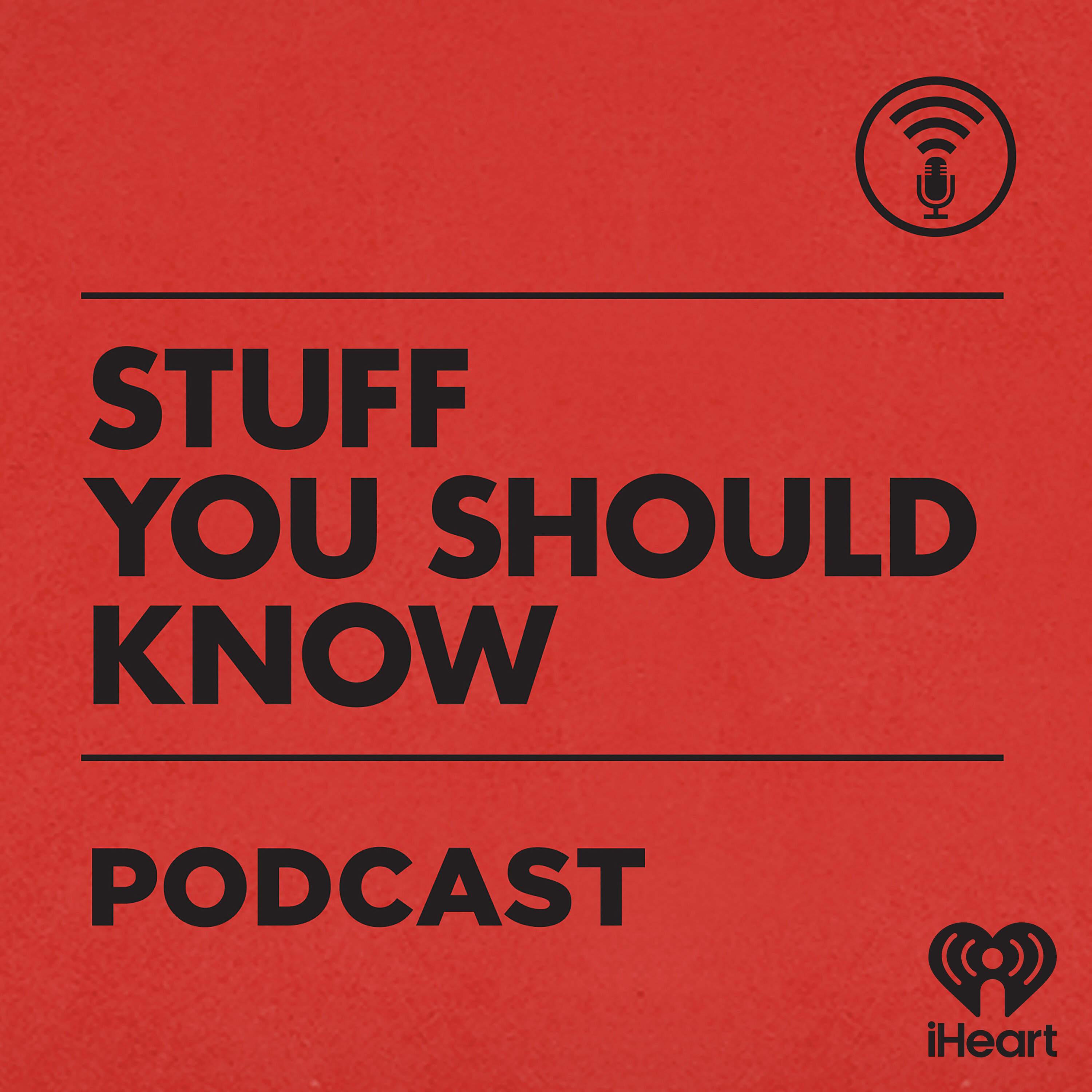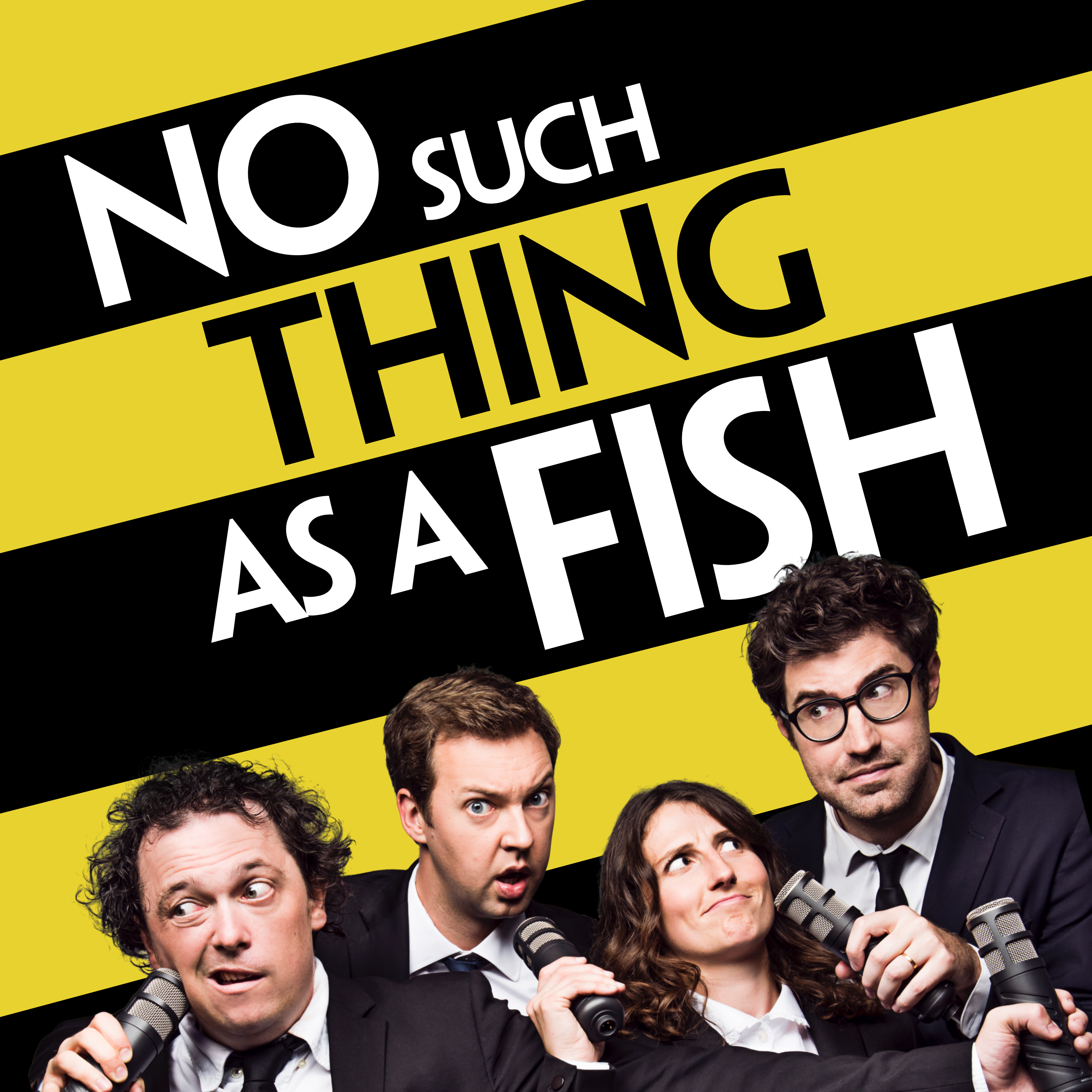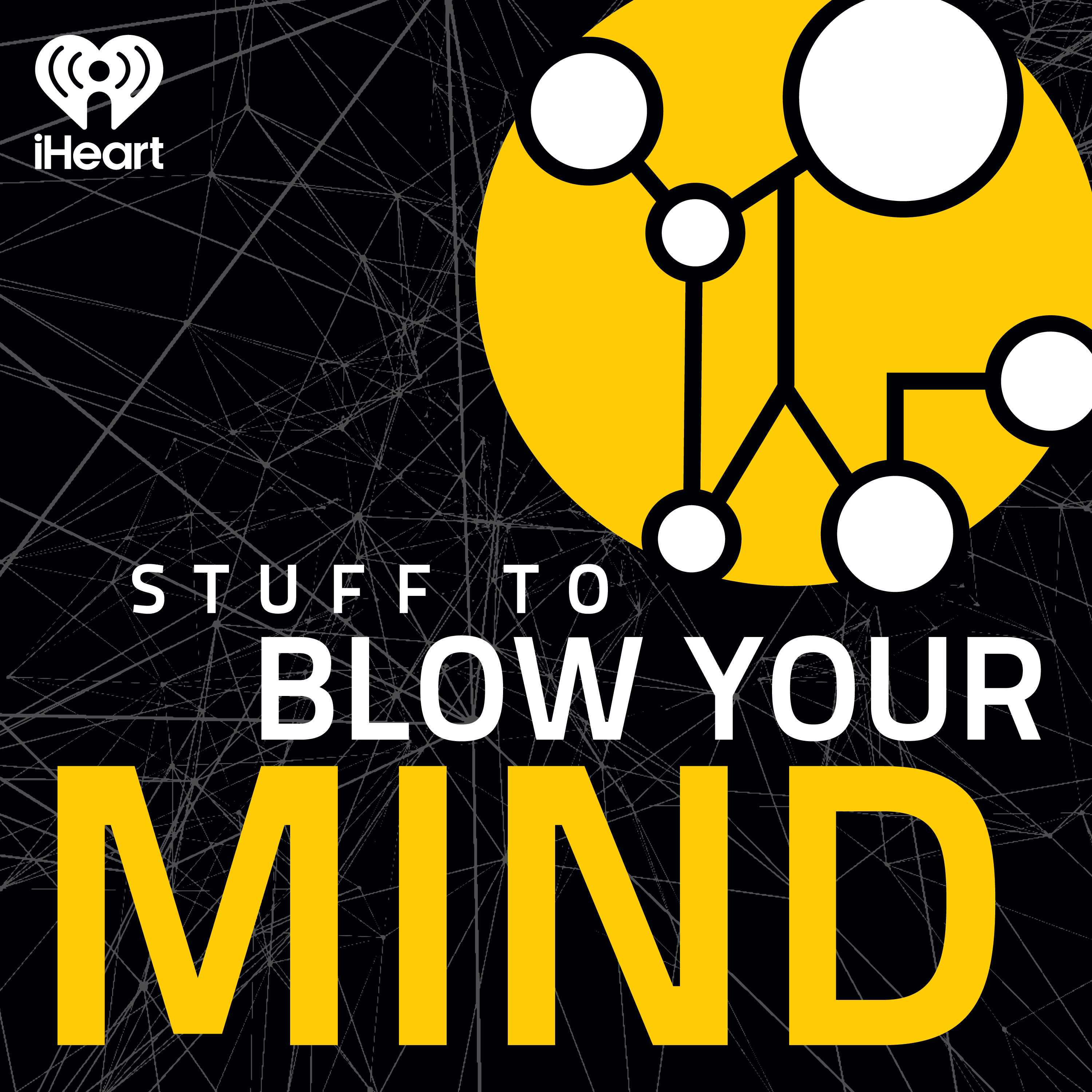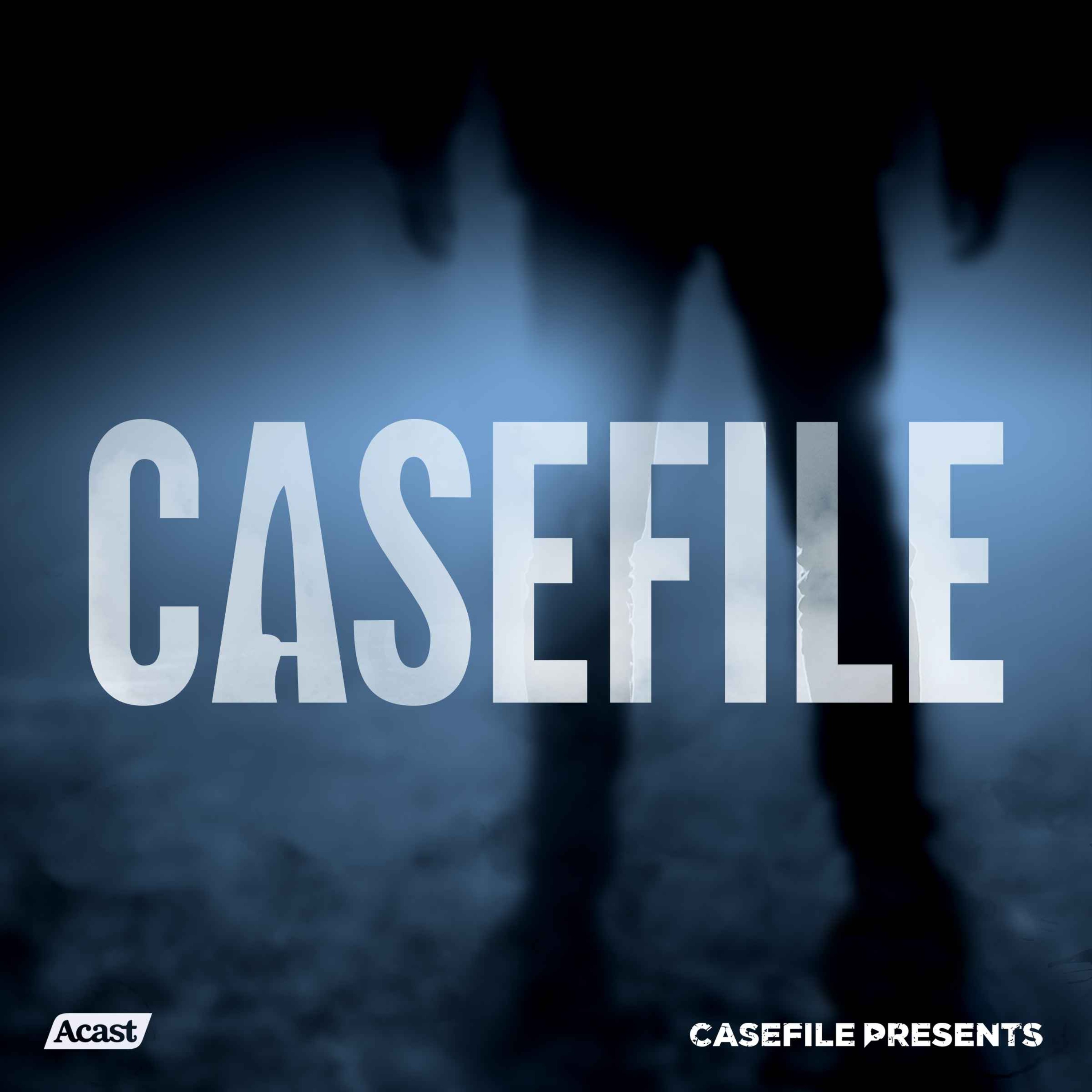
The Compendium: An Assembly of Fascinating Things
A weekly variety podcast giving you just enough information on a topic to stand your ground at any social gathering. We explore stories from the realms of true crime, history, and incredible people.
The Compendium: An Assembly of Fascinating Things
The Challenger Disaster: Christa McAuliffe’s Legacy Beyond the Space Shuttle Explosion
In this episode of the Compendium, we are transporting back to 1986 to explore the Challenger Disaster. learn about Christa McAuliffe and her dream that turned into a heartbreaking space shuttle tragedy. Learn how a flawed O-ring caused the space shuttle explosion and changed NASA forever. We’ll discuss Richard Feynman’s critical role in uncovering the truth and the lasting impact of the Challenger Disaster on space exploration. and we’ll examine how this tragedy happened, what lessons were learned, and its ripple effects on the world of science and beyond.
We give you the Compendium, but if you want more, then check out these great resources:
- Challenger: The Final Flight (Netflix series)
- NASA’s Official Challenger Disaster - Archives
- The Rogers Commission Report - pdf
- Space Shuttle Challenger Explosion - Youtube
- Christa McAuliffe Center for Integrated Science Learning
Host & Show Info
- Hosts: Kyle Risi & Adam Cox
- About: Kyle and Adam are more than just your hosts, they’re your close friends sharing intriguing stories from tales from the darker corners of true crime, the annals of your forgotten history books, and the who's who of incredible people.
- Intro Music: Alice in dark Wonderland by Aleksey Chistilin
Community & Calls to Action
- ⭐ Review & follow on: Spotify & Apple Podcasts
- 📸 Follow us on Instagram: @theCompendiumPodcast
- 🌐 Visit us at: TheCompendiumPodcast.com
- ❤️ Early access episodes: Patreon
📤 Share this episode with a friend! If you enjoyed it, tag us on social media and let us know your favorite takeaway.
[00:00:00] Kyle Risi: Meanwhile, there are cameras pointing at the crowds of people watching and they have direct sight on Chris's parents Edward and Grace. This is really uncomfortable to watch because you see their expressions gradually change from anticipation and excitement to the realization that they are watching their daughter and six other astronauts dying.
[00:00:21] Adam Cox: God yeah, How would you even comprehend that
[00:00:23] Kyle Risi: it is just utter confusion at one point you can hear laughter overlapping with the exact moment that the shuttle starts to break apart people don't know what they're looking at then slowly that laughter turns to silence and then gasps and then screams and this whole time this camera is just fixed on grace and edward it's really really awful to watch.
[00:00:44] They just don't understand what's happening.
[00:00:47]
[00:00:47] Kyle Risi: [00:01:00] Hello, and welcome to the Compendium, an assembly of fascinating and intriguing things, a weekly variety podcast that gives you just enough information to stand your ground at any social gathering. We explore stories from the darker corners of true crime, the annuls of your old unread history books, and of course, the who's who of extraordinary people.
[00:01:33] I'm your ringmaster this week, Kyle Recy.
[00:01:36] Adam Cox: And I'm your sea lion tamer. Adam Cox.
[00:01:39] Kyle Risi: Oh, you're back in the cast.
[00:01:40] Adam Cox: I, you know, do a bit of dabbling but yeah, that's what I'm doing this week.
[00:01:44] Kyle Risi: Adam, today's compendium, we are diving into an assembly of stars, smoke, and the startling truth that everything leads back to capitalism.
[00:01:53] Today, I'm actually going to be telling you about a story we briefly touched upon during the Baby Jessica episode. Do you remember [00:02:00] how we talked about the origins of CNN and how when it launched As a 24 hour news capable network in the 1980s, how for years it just kind of struggled to take off.
[00:02:11] Of course, yes. And of course, that was because Americans didn't feel the need for like 24 hour news. People were just perfectly happy getting their news from the morning paper, then seeing it come to life through audio and video on the six o'clock news. So for years, CNN just struggled to find its footing. But then,
[00:02:31] there were a handful of events between the 1980s and the 1990s, where people did tune into CNN for coverage. And the stories that come to mind, of course, are the Iranian hostage crisis, which was seen as a major unfolding story at the time.
[00:02:46] But then, of course, baby Jessica fell down the well in 1989. And everything changed. And suddenly people began to see the value of having access to round the clock news. It was It is this story that marked that turning point where [00:03:00] 24 hour news coverage started to feel relevant in people's daily lives.
[00:03:05] And it's weird for us to think about not living in a world where there's 24 hour news coverage nowadays, but back then it just wasn't the norm.
[00:03:12] Yeah, do you know what? It's probably simpler times. Exactly. Like I said in that episode, baby Jessica's chubby little foot destroyed the world as we know it. It's the truth. But one of those stories that really tested the waters for CNN's 24 hour news format was The Challenger disaster and we touched upon this briefly in the Baby Jessica episode. And while I didn't know too much about it at the time, I think I was like only four months old when it actually happened because it happened like in 1986.
[00:03:41] But since then, it inspired me to dig deeper and learn a bit more about actually what happened during that tragic disaster event, because when I speak to a lot of Americans, this was seen as a major event, similar to like 9 11. 17 percent of Americans [00:04:00] watched this happen in real time. And by the end of that day, everyone in America was looking for updates on the story.
[00:04:09] What do you remember about the story? Do you know anything about it at all?
[00:04:13] Adam Cox: Well if it's 1986, I was just a twinkle in my dad's eye at that point. Gross.
[00:04:19] Kyle Risi: We all know what that means. You're a tiny sperm swimming around in your dad's balls. I'm a sperm! Yay!
[00:04:26] Adam Cox: Simpler times. Yeah, simpler times for me. But no, I think I, I think growing up, I guess in the early 90s, you hear about space travel and you'd hear of something like the disasters that would have happened.
[00:04:39] The thing that always sticks in my mind, I think it's from Deep Impact, And the astronauts, I think they have to, like, collide into something, the asteroid, that's what they're trying to do to stop it from hitting Earth. Yeah. And I remember them all, going to their impending doom and going, like, We'll have a school named after us.
[00:04:54] Kyle Risi: Ah!
[00:04:55] Adam Cox: Pfft! And that's what I can think of. when it comes to like people that died on a space [00:05:00] mission.
[00:05:00] Kyle Risi: Well I mean there is a learning center that is named after one of the astronauts and of course there are loads of memorials around about this disaster so it's true, that set the precedent for all these films didn't it? Like oh yeah you'll get a school named after you.
[00:05:13] Well, the thing is, though, in particular, the Challenger disaster was this major touchstone moment for millions of kids specifically, because when the Challenger shuttle exploded in midair, millions of kids across the country were watching from their classrooms and live.
[00:05:27] And the reason why so many kids were watching was because on board the shuttle was a teacher, Mrs. Krista M. McAuliffe, who had won a competition to become the first civilian to be blasted into orbit. And in the lead up to the launch, Mrs. McAuliffe became this huge celebrity across the United States.
[00:05:46] So when the Challenger shuttle launched at 1138 AM on January the 28th, millions of kids were eagerly watching. But just 73 seconds after liftoff, Their excitement [00:06:00] and their awe turned into absolute horror and dismay as the challenger broke up mid air while they looked on. Just imagine that for a second, watching that as a small kid, live.
[00:06:12] Adam Cox: Yeah, it must have been like you say, similar to 9 11 because I don't think I was that old when that happened. And I remember just watching. And not really quite understanding. Yes, I've seen a plane go into a building, but I didn't really know what that meant.
[00:06:24] Kyle Risi: Exactly. While some people knew what they were seeing, a lot of people were really confused. They've never seen a shuttle take off before, so they didn't know what they were looking at. So initially it caused a lot of confusion for everyone. So as you can imagine, there are these heart wrenching scenes across the USA where teachers don't know what to do.
[00:06:42] And I just picture these kids just staring at the screens in shock, while like a teacher just calmly approaches the television set and just kind of wheels it out of the room. There's nothing to see here guys.
[00:06:53] So following this disaster, schools across the country were tasked with this very complicated job of trying to explain what happened.
[00:06:59] [00:07:00] And the reality was, Nobody knew. The country was at a loss for how this incident could be explained to all these traumatized kids.
[00:07:09] The inquiry into what happened later on found out that the reason why it exploded in midair was due to a faulty o ring. What's a no ring? Well, that's what we'll get into. So it's quite complicated. In its basic elements, it's pretty simple. But in terms of how it fits in together in the shuttle, it's a little bit more complicated, which I'll explain.
[00:07:30] So today, Adam, I'm going to tell you about what happened during the Challenge Disaster. I'm going to tell you all about Mrs. Krista McAuliffe, the events of that fatal day, and the findings from that initial inquiry.
[00:07:42] We're going to explore how there were glaring systematic issues that filtered up from the engineers who worked on the shuttle Right up to NASA bosses even extending to the president of the United States himself, and how this disaster is a prime [00:08:00] example of capitalism in the modern world.
[00:08:03] It's a rollercoaster ride, Adam.
[00:08:05] Adam Cox: Okay, I'm strapped in.
[00:08:06] Kyle Risi: Hopefully by the end of this you'll have a better understanding of what happened during the Challenger, because all we know is that it exploded in midair, but there's so much more history leading up to it, which I just found really fascinating.
[00:08:18] Adam Cox: Okay. Kyle, let's find out more about this disaster then.
[00:08:21] Kyle Risi: So Adam, what I found really interesting about the story was that by the time the Challenger shuttle launched on January 28th, 1986, shuttle launches themselves were not really news worth. worthy events anymore. In the past year leading up to the Challenger there had already been 10 other shuttle launches and the USA was already well on its way to making space flight and shuttle launches as routine as a kind of just taking an airplane.
[00:08:44] The only thing that made the challenger launch newsworthy was the fact that a young 37 year old teacher, Mrs. Krista McAuliffe, was going to be on board. The newsworthy element was that this was seen as a major educational and inspirational moment, because in 1984, just two years [00:09:00] before, Ronald Reagan had announced what they called the teacher in space program as a way for the government to demonstrate a, the reliability of space flight and inspire students to take an interest in space exploration, what they call like the STEM kind of subjects.
[00:09:16] And they figured the best way to do this was by honoring teachers who had direct influence on kids across America. So I think that's really smart.
[00:09:25] Makes sense. Yeah. Yeah. So when the program was announced, it was incredibly exciting. No civilian had ever been in space before. So the program received over 11, 000 applications from teachers all across the country.
[00:09:38] And after the closing date for submitting applications, each one was rigorously reviewed and eventually they whittled them down to 114 semi finalists, they were then all invited to attend the space education conference in Washington DC, where the final 10 were then finally selected.
[00:09:54] But then, on the 19th of July, 1985, following various medical [00:10:00] examinations of the finalists, Vice President George H. W. Bush went on TV and announced that a social studies teacher from Concord, New Hampshire, Mrs. Krista McAuliffe, would be the first civilian to travel into outer space.
[00:10:15] Adam Cox: And so how was she of selected in terms of like, why her out of the other finalists?
[00:10:21] Kyle Risi: Well, the thing is, Mrs. McAuliffe, she really was exceptional. It was like in hindsight, when the finalists were in the room with her, they're like, and it got announced, they were like, it made sense, we knew that she would win anyway, right? At the time, she was 37 years old, she was selected based on her infectious enthusiasm as a teacher.
[00:10:38] And Krista, she was really nurturing. She was really inspiring to her students, especially young girls who at the time, were living in a male orientated world. And she was just constantly frustrated with how women in history were often just treated as mere footnotes compared to men and wanted to show that women have always played pivotal roles throughout history.
[00:10:58] And what really impressed the [00:11:00] panelists was the fact that she developed this course called the American woman, which explored history from by different female perspectives. And so when she won her bid to be the first civilian in space, Christa was adamant that she wasn't going to kind of waste this opportunity.
[00:11:15] She was going to actually broadcast two lessons from orbit, which just sounds so cool. And the lessons were going to be called like the ultimate field trip.
[00:11:23] Adam Cox: Where she's just on the field trip. Okay, bit selfish.
[00:11:27] Kyle Risi: But it's going to be broadcast as well. So that you're going to be with her in the best way possible.
[00:11:31] Adam Cox: So it'd be across like, All schools in America. She would like, Hey, it's a science lesson.
[00:11:35] Kyle Risi: I think it's gonna be just broadcast and tele, not just in class. Okay. In classrooms. So basically the kids would get a tour of the spacecraft to showcase obviously its design functionality and give them a kind of an inside look as to what life is like on the shuttle.
[00:11:48] And she was also going to conduct a number of different experiments, like in hydroponics, so how they grow plants and vegetables on the space shuttle. They're gonna be experiments and magnetism, and they were gonna explore kind of Newton's laws of [00:12:00] gravity
[00:12:00] Adam Cox: and pooping.
[00:12:01] Kyle Risi: Uh. You maybe I mean that's part of it. They're going to be introduced to the equipment on board She also planned to kind of keep a detailed daily diary that would then later be published and used following the trip to inspire young kids to go into sciences. And it just seemed, as the world learned more and more about Mrs. McAuliffe, That she became this kind of crazy national treasure. Kids all over the country were really excited that there was a champion of kids who was about to embark on this really exciting journey and it was all for their own benefit.
[00:12:32] When you also see pictures of Krista on the internet, Adam, she just looks like A really nice lady.
[00:12:38] Adam Cox: Yeah, just looking at a photo of her now. She's got a, well, a very 80s style hair. Nice perm.
[00:12:43] Kyle Risi: I remember my mum having a perm like that.
[00:12:45] Adam Cox: Yeah, quite big hair. But yeah, she looks really nice. She looks like she would be a good, friendly primary school teacher.
[00:12:51] Kyle Risi: That's exactly what, so she wasn't exactly primary, but she taught primary through to high school, but people really loved her, and Krista wasn't just a teacher, she was also a loving [00:13:00] wife to Stephen McAuliffe, and a doting mother to her two children, Scott, who was nine at the time, and Caroline, who was six, and to Scott, Adam, she was the ultimate hero, like the cherry on the cake was the fact that She was his mum, and he was so proud that his mum was going to go into space.
[00:13:18] And there's a really, really sad detail that I read, that Krista planned to take Scott's favourite, like, frog plushy toy that he called Flegal, with her into orbit. And her plan was to wave in front of the camera during one of the lessons to show Scott that Flegal had snuck into her bag and hitched a ride into outer space.
[00:13:36] Isn't that so sad? The more I read about Krista, the sadder this became. It was horrible.
[00:13:41] Adam Cox: Yeah, because you think that She's got a once in a lifetime opportunity to do this, you're gonna do it, aren't you, if you get chosen? Yeah. And I guess everything up until this point, she would have thought, this seems all safe and above board and everything like that.
[00:13:54] Kyle Risi: People trusted NASA, that's the thing. Out of all the government agencies that exist, [00:14:00] NASA is the one that you go, it's a bunch of geeks. They're the good guys, right? Yeah, they know what they're doing. Exactly. They didn't. Nope.
[00:14:07] So less than a month after being announced as the winner of the teacher in space program, Krista had to report to the Johnson Space Center to begin her training, where she was going to be training alongside six other crew members who were all already experienced astronauts or engineers or payload specialists.
[00:14:23] And the commander of the shuttle was going to be Francis R. Scobie. And he had previously piloted a mission which deployed a new satellite. And then since then, he'd been an instructor pilot and this was actually going to be his first command in space. And for him, this was like the achievement of his lifetime.
[00:14:40] Piloting the mission would be Michael J. Smith. He had flown 28 different types of civilian and military airplanes in the past, and he's racked up kind of a total of 4, 867, uh, hours of flight time. Who's keeping track of that? I don't know, do you
[00:14:56] Adam Cox: clock in? I, yeah, check the speedometer. Little [00:15:00] stopwatch, like, right, okay, go.
[00:15:01] But, so that's just commercial airplanes or military, so that's enough for you to then go, you're ready for flying a plane. Not necessarily
[00:15:08] Kyle Risi: ready, that's what he'd done before. And then what NASA would do sometimes, they would like have these little articles in the paper, like in the classified ads, and someone would read that, and he'd be like, oh, that's, maybe I could do this. And then he'd apply, and then they would get a call, and then they'd be like, yeah, come down and do some training.
[00:15:22] Adam Cox: It's for NASA.
[00:15:24] Kyle Risi: For
[00:15:24] Adam Cox: NASA,
[00:15:24] Kyle Risi: yeah.
[00:15:25] Adam Cox: And would they know it's for NASA? Would they just say, Oh, yeah, yeah. Okay.
[00:15:27] Kyle Risi: Yeah. They would all know all that. So it's just crazy. That's how they were recruiting pilots. These were just regular civilian pilots. Hey, have you got what it takes to be a NASA pilot or a NASA?
[00:15:38] Adam Cox: Work for
[00:15:39] Kyle Risi: NASA.
[00:15:39] Adam Cox: Yeah. Just I think like, how else would you do it? They didn't have LinkedIn back then.
[00:15:42] Kyle Risi: Exactly. Also, Judith A. Resnick. She would be a mission specialist on board and Resnick became part of astronaut group eight and she was actually one of the first women to be included in this group.
[00:15:54] Two other mission specialists on board were Ronald McNair, who had flown on a previous Challenger mission in 1984, [00:16:00] so two years earlier, and he was the second African American to fly in space.
[00:16:05] Another first on board was Ellison Onizuka, and he was the first Asian American and the first person of Japanese origin that was actually in space. So it was a really diverse group of people.
[00:16:16] And the final crew member was a payload specialist called Gregory B. Jarvis and this would be his first mission in space. Although he had previously been sidelined to fly on board a different shuttle in 1985. Some politician wanted to go up in space who was funding NASA or was in charge of the budgets. So two times. He was sidelined for a politician.
[00:16:36] So this is like a once in a lifetime experience and they're just like, yeah, no, we've got this important guy from Washington, D. C. He wants to go up into orbit. So then, would that have made
[00:16:44] Adam Cox: him the first civilian to go into space?
[00:16:46] Kyle Risi: No,
[00:16:46] Adam Cox: because he was a politician, I guess.
[00:16:47] But he's still a civilian. He's not an astronaut. True,
[00:16:50] Kyle Risi: true, but I mean, it's considered that Christopher McAuliffe is the first civilian. I guess regular folk. Exactly. And at first, the other [00:17:00] astronauts, they were really miffed that Krista was taking up one of these precious spots over a more experienced astronaut who'd worked their entire career to be offered this once in a lifetime opportunity.
[00:17:09] But in reality, it wasn't long after meeting Krista that they realized how worthy she actually was. And that ultimately her presence was really shining the spotlight on NASA at the time. Because you also got to remember, uh, The, the shine had almost disappeared from NASA.
[00:17:24] It wasn't like this big major event it once was when we were putting people on the moon. We got bored of that, right? And now they were trying to make space flight seem routine and regular. So it's not a newsworthy event anymore. They're like, how are we going to make this more newsworthy? So By having her there, she becomes this instant celebrity, she shines a light more on, uh, NASA and spaceflight, and she inspires a whole generation of other young kids to then grow up and then be interested in the same projects.
[00:17:52] Adam Cox: Like it's a really nice idea. And make sense what they were doing.
[00:17:56] Kyle Risi: But it was of course made clear from the very beginning that Krystal was expected to maintain the same [00:18:00] standards expected from the other astronauts. And so over the next four months, her training was intense. She had to learn all about the shuttles and its systems.
[00:18:08] She has to understand the emergency protocols and the evacuation drills. She had to do test flights and train in one of those kind of weightless aircrafts where you experience episodes of weightlessness, which I imagine would have been really, really fun. Do you know what I mean by that? Yeah.
[00:18:22] Adam Cox: Yeah, is it, um, they fly some, like a certain level above the Earth's surface and then do they drop or something? Is that how they cause that?
[00:18:29] Kyle Risi: Yeah, they just like free fall for a bit, for like 20 seconds and then you experience like 30 seconds of weightlessness and then they go up again and then, um,
[00:18:37] Adam Cox: To be honest, I think that'd be scary enough. Seeing a plane free fall, I'd be like, no, get me out of here. I don't know how that would be fun. Yeah.
[00:18:44] Kyle Risi: I, to me that'd be fun when you see images of them just playing in this aircraft, like spraying water and like doing leapfrogs and flying through the air. It looks really fun to me.
[00:18:53] Adam Cox: Could they not do that? Like, I thought they could simulate that on Earth, but can they not?
[00:18:57] Kyle Risi: No. No, I don't think so. You need to be free falling for [00:19:00] a significant period of time. Jeez.
[00:19:01] So the original launch was scheduled for January the 22nd of 1986, but due to adverse weather conditions They ended up delaying the launch four times.
[00:19:10] But eventually the decision was made to launch on January the 28th and this by the way It wasn't because the conditions were finally perfect, it was more that the launch had been delayed so many times already that NASA was now behind their planning of future missions.
[00:19:25] They had 12 other launches scheduled for that year and had a target of getting up to 24 launches a year , which loads of people were like, it's completely unrealistic, but they were now behind and so they were off to a bad start. So they're like, we need to launch.
[00:19:40] Adam Cox: Yeah, regardless, we need to launch, yeah. I'm guessing that means they cut corners somehow, or at least didn't do certain checks.
[00:19:46] Kyle Risi: I think you're getting the sense that they're now putting on the urgency to launch and keeping ahead of schedule over
[00:19:53] Adam Cox: safety. Yeah, okay.
[00:19:54] Kyle Risi: So obviously we know what's about to happen. But the question is why?
[00:19:58] So first I want to start by [00:20:00] explaining how these solid rocket boosters are put together, because this will help us understand the events. That are going to happen immediately after takeoff.
[00:20:07] Okay.
[00:20:08] So when you imagine a space shuttle, there are actually four main components. First, there is the actual space shuttle itself. This is where Mrs. McAuliffe and the rest of the crew will be sitting when the shuttle actually launches. It's the thing that looks like an aeroplane.
[00:20:21] The plane is then attached to a big rocket tank with two smaller solid rocket boosters attached to the side.
[00:20:28] Now, the big rocket tank in the middle is called the external tank, which holds the fuel for the shuttle's main engines.
[00:20:34] There's two smaller solid rocker boosters when they ignite they only burn for two minutes But this is the most important two minutes of the launch because during takeoff the shuttle needs to thrust harder to overcome earth's gravity and Atmospheric drag because there's a lot stronger the closer you are to earth So they need a lot more assistance to help them lift off
[00:20:56] So basically these two rockets are doing most of the heavy lifting [00:21:00] in helping you escape Earth's gravity.
[00:21:02] And the idea is that after two minutes, they separate from the main tank and then they fall to the ground. And usually they'll fall into the ocean where the shuttle's main engine take over and then transport the shuttle the rest of the way into orbit.
[00:21:15] Adam Cox: Right. Okay.
[00:21:15] Kyle Risi: Now the issue lies in these two smaller rocket boosters on the sides. Now, while they seem small compared to the entire shuttle, they're actually 150 feet tall. They're massive. Now, the important thing here is that these boosters are made in Utah by a company called Morton Theocol.
[00:21:34] They are just one of the contractor companies that NASA uses to build these rockets in these various components And this is a fairly new way of doing space things NASA no longer makes their own rockets Make a note of that in your head Because this will be instrumental in understanding what went wrong later on.
[00:21:50] Adam Cox: Is it like aeroplanes, like Boeing 47 or whatever, their engines always Rolls Royce or something else? Yes,
[00:21:56] Kyle Risi: exactly. Yeah, you outsource to whoever specialises in [00:22:00] that thing. So when these rocket boosters are built, they are then transported to Florida in four separate segments where they are then assembled and fitted to the main shuttle.
[00:22:10] This is where the o rings come into play because to assemble these 150 foot rocket boosters, you need to be able to connect the different segments together somehow. Now imagine for a second you have a plastic bottle and you've sliced that plastic bottle into four smaller pieces. If you were going to reassemble The pieces back together you would kind of like shove them together kind of overlapping with each other, right?
[00:22:33] Adam Cox: Yeah,
[00:22:34] Kyle Risi: now obviously if you fill that water bottle up the water would just leak out of the joints So what you need is a rubber band of sorts to go around the inside of the water bottle between where the pieces join to create an airtight seal. Now the rubber band is what they call the o ring.
[00:22:51] Except it's 38 feet in circumference and about an inch thick. And there's two of them at each joint.
[00:22:57] Adam Cox: So only an inch thick, so quite big, but [00:23:00] also not that thick really.
[00:23:01] Kyle Risi: Exactly, yeah. So once the o rings have been fitted, they are then covered in like a putty like substance which helps keep everything together firmly and creates a seal so no fuel can kind of leak out when it's finally launched.
[00:23:13] The important thing here is that this whole setup is designed to withstand temperatures in excess of 3000 degrees celsius because literally they are igniting rocker fuel. So these solid rocker boosters are constantly reused as well. After a launch NASA sends out a recovery mission to collect them from the Atlantic Ocean and then over time they end up wearing down.
[00:23:36] Adam Cox: I was going to say, if that falls to the planet, then you'd think actually it's like a single use thing. I don't think they've reused them.
[00:23:43] Kyle Risi: They're reusing these bad boys. And for over two years, the engineers and technicians working on the shuttle program had warned that the space shuttles were being overused.
[00:23:51] It felt as if after dozens of flights, it was only going to be a matter of time before something tragic happened. And NASA officials, they [00:24:00] acknowledged the engineers concerns, but nothing was ever done.
[00:24:03] Adam Cox: Yeah, it feels like, they should not have been, yeah, I don't know if I would have trusted that.
[00:24:07] Kyle Risi: They were conducting proper reports of the damage, but it was about how the managers then interpreted the wear and tear, which is a problem, and we'll get onto that in a minute. But here's the biggest issue. The night before the scheduled launch on January the 28th, Florida is hit with a once in a lifetime cold snap where temperatures drop below minus 8 degrees Celsius.
[00:24:31] What was suspected at the time, but poorly understood, was that at these temperatures the O rings actually lose their structural integrity. Which is wild to me because they can withstand temperatures of 3, 000 degrees heat, but bring them below zero, a couple degrees, and they stop being effective. Do they contract or anything?
[00:24:51] They lose their elasticity almost. Like if you pull them, it would take them a while to go back to how they were. They were initially, whereas if it was normal temperatures above [00:25:00] zero or twelve degrees, as they say, then you stretch it and then it would bounce back like a rubber.
[00:25:05] And the reason why this is poorly understood is that all launches they happen in florida Which is subtropical climates, right? So they very rarely ever experience any launches in really cold temperatures There are a few but not many for them to draw effective data on And the emphasis has always been anyway on ensuring that they could withstand temperatures That are high above 3000 degrees. That's the important thing, right?
[00:25:26] Adam Cox: Yeah, I guess there's no other thing. Or we need to make sure it goes below minus 20 or something. Exactly.
[00:25:30] Kyle Risi: So the morning of the launch, the engineers and the ground crew, they set to work preparing for liftoff. And all the infrastructure has all these icicles all over them, like beards of icicles hanging off all the railings. They're covering the fuse boxes and the switches. And when you see pictures of this, Adam, it honestly looks more like an abandoned North Pole radio town, not tropical Florida.
[00:25:51] Adam Cox: Really?
[00:25:52] Kyle Risi: The reason why the Beard icicles are there is because it dropped below zero. They knew that they needed to make sure that none of the pipes froze over.[00:26:00]
[00:26:00] So they turned on all the infrastructure sprinklers and stuff. And there's that water that is then landing on all the equipment and then freezing, but they do that. So none of the internal pipes freeze.
[00:26:09] Adam Cox: Right. Okay.
[00:26:11] Kyle Risi: So they just go ahead and they set out to clear as much of the ice as possible. They check, they double check, they triple check everything. That was obviously the norm, but today was extra important to make sure there was no ice obstructing anything that was important. And as the morning progressed, the temperatures rose above 3 degrees Celsius, so not freezing, but still pretty damn cold. In fact, this was going to be the coldest launch ever.
[00:26:32] Now Mission Control in Houston prepared to track and monitor the space shuttle's progress. Telemetry coming in from the hundreds of sensors was recorded and double checked to ensure that the Challenger was ready. And eventually, It looked like the launch was going to be cancelled. Even the astronauts themselves were really surprised when they're like, Yeah, we're going. So within five minutes, they're like, Yeah, we're definitely going. And they had to just quickly get all this stuff and then get in because they just assumed it was going to be cancelled.
[00:26:57] Adam Cox: Yeah, like, are you sure? Are you definitely sure we should [00:27:00] go?
[00:27:00] Kyle Risi: Mm hmm. But Chris's feeling was like, do you know what? I trust NASA. Yeah. And why would they not? They're seen as the good guys in America, right? They put us on the moon.
[00:27:08] Yeah.
[00:27:09] So eventually, the launch is given the green light and they start preparing for a liftoff. And around mid morning, a crowd of 500 spectators start arriving, including the world press. Among them were 18 school kids from Mrs. McAuliffe's hometown in Concord.
[00:27:23] Families of the crew, including Chris's parents, Grace and Edward, her husband Steve, and their two kids, Scott and Caroline, all arrive to say goodbye and see their mum become the first civilian teacher to go into orbit.
[00:27:37] Now there is a bit of a question over whether or not Scott and Caroline were there because it had been delayed a bunch of times. They were going to take off I believe on the Sunday course it was a weekday and so they might have been in school.
[00:27:50] But the point is that the atmosphere was super exciting. It was just filled with like anxiety, but also pride.
[00:27:58] Adam Cox: Imagine there's like a buzz of [00:28:00] excitement, really. This is the first time they're seeing, especially the family, their mum or their daughter, wife, going to space. That'd be an incredible feeling. Yeah, not
[00:28:08] Kyle Risi: many Americans get to do that in their lifetime. So, of course, this is going to be an incredible, incredible atmosphere. And don't forget, the millions of kids across the United States were eagerly anticipating watching the launch, Later that day at school.
[00:28:22] And so after all the hugs and kisses were done, the seven astronauts entered the shuttle lift to head up to the top of the scaffold and to get ready for launch. The shuttle door was sealed behind them, the cockpit was eerily quiet, except for kind of the sounds of switches being engaged and the pilots checking the systems on board, etc.
[00:28:40] And Mrs. McCall, if she looks out the window, the sky is crystal clear, she sees a bird fly past her, and she just smiled. Then she checks the safety harness, she leans back in her seat, and all you hear is just this big long sigh, like, I'm ready.
[00:28:55] Adam Cox: I don't know if I'd ever be calm in that situation.
[00:28:58] Kyle Risi: She's been preparing for a long time. Yeah, [00:29:00] so I think when you've been told that it's safe And You've done all this training and all the excitement and the buzz and you know that you've got this big Responsibility on your shoulders to bring this new awareness to the STEM subjects. Yeah, this this is your moment, right?
[00:29:14] Adam Cox: Yeah, so I get nervous even when a plane takes off.
[00:29:17] Kyle Risi: Yeah, exactly other than the crew the shuttle was also carrying tracking and data relay satellites to study Haley's Comet. So if you remember, that was the comet that the Heaven's Gate Colt thought was their mothership coming to collect them.
[00:29:31] Adam Cox: Oh, really? Wow, how does, it's a weird link in terms of, into that story.
[00:29:36] It's like an anthology.
[00:29:37] Kyle Risi: Or a compendium.
[00:29:39] Adam Cox: Oh yeah, that.
[00:29:40] Kyle Risi: So at 11. 38am the challenger starts his countdown. 10, 9, 8, 7, 6, We have main engine start, 4, 3, 2, 1, and lift off. The solid rocket ignition command was sent, and they both started to roar to life. [00:30:00] And then the space shuttle Challenger just lifted off the ground. It was as seamless as that.
[00:30:06] One second after liftoff, pilot Michael Smith said over the intercom, here we go. And I can just imagine, I can just feel this happening. I feel like I'm almost in there when I was reading about this.
[00:30:16] Five seconds after liftoff, the command center announces that it's all systems go. The three liquid fueled main engines. throttled up from 90 percent to 104 percent thrust, and there's just a major cheer in the control center. And there were no anomalies detected by anyone at this point during the launch.
[00:30:34] There was. A slight anomaly though at this stage. The internal pressure of the right booster was slightly higher than normal, but this was still within acceptable kind of parameters. It's this data point that would later be used to identify when the challenger Space shuttle began to run into trouble.
[00:30:54] Eight seconds after liftoff pilot Smith began a roll maneuver that puts the crew into kind of [00:31:00] Like a heads down position so that the top of the shuttle is pointing downwards towards earth and the main fuel tank is pointing upwards So basically they're just rolling.
[00:31:08] Adam Cox: Okay
[00:31:09] Kyle Risi: mission control responds. Yep, roger roll challenger and then the maneuver is completed and then mission control says good roll flight. So everything's moving smoothly.
[00:31:18] At 19 seconds the Challenger space shuttle begins to shake a little bit and this was sudden it was a violent thrust to the side and this is where Michael Smith pulls on the flight stick ever so slightly to help kind of the navigation system correct itself and the challenges them back on course. And he says, looks like we've got a lot of wind here today.
[00:31:37] And what he didn't know was that this moment would be key to everything that was about to happen. Because this was the windiest day of any launch ever recorded at these altitudes. And that's going to be really important.
[00:31:49] Adam Cox: So it was wind that caused that shake at that point?
[00:31:52] Kyle Risi: That's correct, yeah. 28 seconds after liftoff, they were about 10, 000 feet, traveling at Mach 0. 5, which is half the [00:32:00] speed of sound at this point. Smith begins to throttle down the engines. All data indicates that the shuttle computer systems are making all the proper adjustments to deal with the wind that's happening all around them.
[00:32:11] 45 seconds after liftoff there's a sudden bright flash slightly behind the spacecraft's right wing. Then there was a second and then there was a third. The crew though couldn't see these because of course there's no tracking cameras inside the cockpit itself but They were picked up on the tracking camera in Mission Control, which they zoomed in to take a closer look, and everyone in the control center is just baffled. A plume of smoke starts pouring out of the rocket and remember, the crew on board have no sensors in the cockpit, so they have no visibility of what is happening around them. Everything has just been seen from mission control.
[00:32:49] Adam Cox: And has mission control said anything to them at this stage or not wanting to alarm? They're just like investigating what's going on.
[00:32:56] Kyle Risi: They're just baffled at this point as to what's causing that. They've seen those three [00:33:00] bright flashes. They can now see the plume starts licking the kind of fitting attachment that attaches that rocker booster to the main external tank. So this fire now pounding on it.
[00:33:11] Adam Cox: Okay.
[00:33:12] Kyle Risi: Then all of a sudden, swells of liquid hydrogen start leaking out and the fuel tank gauge in the cockpit just starts to plummet as all this fuel is being ejected from the actual main fuel tank. Smith doesn't notice this because of course he's focused on throttling the engines and preparing to disengage the boosters.
[00:33:31] Then we get to 72 seconds after liftoff. The back end of the right booster is ripped away. from the fuel tank and the strut that was securing it to the main tank has completely failed because it was being licked by this fire that was ejecting out of it.
[00:33:47] Adam Cox: So what does that mean it can't disengage or remove it?
[00:33:50] Kyle Risi: It's already removed so but not both of them remember there's two struts that are connecting it to the main fuel tank the bottom one is just now loose which means that if there's only [00:34:00] one connecting it it's kind of just swinging and like
[00:34:02] Adam Cox: bashing it or hitting it.
[00:34:03] Exactly,
[00:34:04] Kyle Risi: yeah. 73 seconds after liftoff, Smith says, Uh oh. And those are the last words that we heard over the comms.
[00:34:13] It's at this moment that the fuel tank and the loose booster began breaking apart because the right booster was producing a hundred thousand pounds less thrust than the left one. It's kind of like causing the entire shuttle to just become really unbalanced which forces the burning booster up into the liquid oxygen section of the main fuel tank and there's this big bright flash as the leaking fuel is ignited engulfing the entire spacecraft. So yeah, the thing's exploded.
[00:34:43] Adam Cox: So all this has happened in, it sounds like, what, the space of less than two minutes, is that right?
[00:34:47] Kyle Risi: That's right, yes. 72 seconds up to this point, it exploded on the 73rd second.
[00:34:52] Adam Cox: That is not long, because to go from like excitement of, yeah, this is great, this is going well, and then literally within 20 seconds of that [00:35:00] kind of feeling, of it blowing up, they have no time to react.
[00:35:04] Kyle Risi: Meanwhile, Adam, there are cameras that are set up in the bleachers pointing at the crowds of people watching and they have direct sight on Chris's parents Edward and Grace. This is really uncomfortable to watch because you see their expressions gradually change from anticipation and excitement to the realization that they are watching their daughter and six other astronauts dying.
[00:35:26] Adam Cox: God yeah, you wouldn't How would you even comprehend that I don't know what you'd do if you had the camera pointed on you like would you know, the camera is there I wonder if you just forget about what's going on behind
[00:35:37] Kyle Risi: just forgotten. Yeah I don't think they realize that the camera is on them and the footage all around them is just utter confusion at one point you see people still smiling you can even hear laughter overlapping with the exact moment that the shuttle starts to break apart people don't know what they're looking at then slowly that laughter turns to silence and then gasps and then [00:36:00] screams and this whole time this camera is just fixed on grace and edward it's really really awful to watch.
[00:36:07] They just don't understand what's happening.
[00:36:10] Of course, across America, millions of kids are watching in their classrooms. Everyone watching is just stunned into silence. A science teacher, Steve Fannin, he also applied for the teachers in space program, said initially, We didn't know what we were looking at, his brain just didn't commute what was happening.
[00:36:26] And as that started to settle in, many teachers watching along with their students had to struggle to keep their emotions in check in front of the kids. Some teachers did burst into tears. That just ended up freaking out the kids.
[00:36:39] Adam Cox: Well, yeah, you can't like, in that situation probably control your emotions.
[00:36:44] Kyle Risi: And also, how do you know how to react? You've got to be really quick thinking. No one prepares you for that.
[00:36:48] Adam Cox: Yeah. And I think also maybe if you haven't really watched many space shuffles before, you're always like, is this what kind of question yourself? Is this what happened? What shouldn't have happened? Kind of thing.
[00:36:58] Kyle Risi: I think that is a fair [00:37:00] assessment. That is the main thing. that people are experiencing. They don't know what they should be looking at. I read that one kid was in the fourth grade watching with most of his grade when they saw all the smoke coming out of the shuttle. They didn't know that this wasn't normal. They said that the teacher then walked up calmly to the TV, turned it off, and then they went back to class.
[00:37:20] Adam Cox: So the teacher knew something's going wrong here.
[00:37:22] Kyle Risi: That's it. They had no idea that it exploded until the night when their parents were talking about it during dinner. And the teacher didn't explain what had happened. None of them asked either. They just figured the shuttle made it into space and that was normal. And so for those that did know what happened or were told what happened, this would have been extraordinarily traumatizing for them.
[00:37:44] But get this, before the decision to have a teacher selected to go into orbit, NASA was seriously toying with the idea of sending Sesame Street's Big Bird. Big Bird? Yeah. So, just for a second, imagine the trauma that that would have [00:38:00] imparted on these kids Had they seen that happen.
[00:38:03] Adam Cox: How would have Sesame Street recovered from that? No, they wouldn't have done. That would have been taken off. I used to love Sesame Street. So I would have been, Big Bird was one of my favourites. I would have been. Is Sesame Street even Sesame Street without Big Bird? Yeah, Oscar the Grouch, yeah, fine. But still, it's Big Bird, isn't it?
[00:38:19] Kyle Risi: It's at this stage that the two solid boosters continue then to fly upwards like at different angles forming that now iconic y shaped smoke plumes that we've all seen in the images of this disaster also within the wreckage people from the ground they can see wires and electrical cables flailing behind the fuselage like tentacles They do see a parachute emerge from the smoke plume, which gives people on the ground hope especially Grace and Edward that is the cabin crew, but it just turned out to be the nose cap of the right solid rocket booster.
[00:38:55] At that moment, the crew cabin is then seen arcing out of the [00:39:00] smoke and flames. And it does seem to be intact, but it was now slowly arcing towards the Atlantic Ocean at around 200 miles an hour. Mrs. McAuliffe and the other astronauts, Adam, they would have been alive this entire time until they smashed into the ocean.
[00:39:16] Really? Yeah. They say that it's likely that there was a drop in cabin pressure, which could have caused the crew to lose consciousness, but there is data that indicates that three of them had engaged their breathing masks, meaning they would've been conscious until they hit the ocean.
[00:39:33] While all of this is going on, there is commentary from the mission control center. And it's really unnerving to listen to purely based on how extraordinarily calm they are. Like you hear them say, shhh flight controller here, we're looking very carefully at the situation. Obviously there's been a major malfunction.
[00:39:56] We have no downlink. We have reports from flight [00:40:00] dynamics officer that the vehicle has exploded. Flight director confirms that we are checking with the recovery forces to see what can be done at this point. That's how they spoke.
[00:40:10] Adam Cox: I guess they are probably trained to speak like that, aren't they? They can't give any ounce of confidence. That something's wrong or well, obviously something's wrong, but any panic in their voice
[00:40:21] Kyle Risi: And I have seen some footage as well of them actually in the control room and the guy who is reading this I can't remember his name. You see his chest just pounding upwards He is breathing heavily, but he's able to maintain this degree of calm.
[00:40:35] Adam Cox: Bloody hell
[00:40:36] Kyle Risi: So it's just horrific, Adam. Absolutely horrific. And then everything is just very protocol. You then hear the commander in the mission control saying, Guys, everyone just get your data all ready. Start compiling it together, because they know that they have to now start scouting through all this data.
[00:40:52] But then also, no one's allowed to leave that control room. Because they don't want to risk anyone talking to the press. They don't want anything leaking out. Everyone has to stay. They can't even [00:41:00] go to the toilet.
[00:41:00] Adam Cox: It's like a lock in. Essentially.
[00:41:02] Kyle Risi: Essentially. Then NASA gives the orders to initiate a self destruct signal to be sent to the solid rocket boosters which are flying now off at a Y formation ahead of the rocket.
[00:41:13] Now without the weight of the space shuttle and the fuel tank, there's no telling how far these rockets are gonna go before they burn all of their fuel. Remember they're only designed to burn for two minutes so they need to detonate them to eliminate the risk of them crashing back down to earth over a populated area and hopefully that falls into the Atlantic Ocean. So they just send the signal and they explode.
[00:41:35] Adam Cox: And they don't, do they normally do that? No, they normally fall into the ocean.
[00:41:38] Kyle Risi: They normally fall into the ocean. They're only sending the detonation here because they know it could fall over, uh
[00:41:43] Adam Cox: Yeah, it's not going on the right path that it normally would.
[00:41:46] Kyle Risi: Yeah, and Adam, that's what's happened.
[00:41:49] Adam Cox: And so was there any escape? Because sometimes you've seen, astronauts, crash land. They're in like a little hub, aren't they? Like a little unit that they could get into should something, I [00:42:00] assume, bad happen. Or maybe when they're coming back to Earth, that's how they get back to Earth.
[00:42:04] Kyle Risi: That's not how it's done with a shuttle. You're talking about like the Apollo days. Yeah. When that's how they would re enter orbit. Now they're coming back in, essentially, in an airplane, right?
[00:42:14] Adam Cox: And so there's no, that wasn't even an option for them to get out that way.
[00:42:18] Kyle Risi: No, no, there's no ejection option. So the question is what caused this? And the answer is, it's very complicated, but the simplest way I can explain is that due to the cold snap the previous evening, the O ring on one of those solid rocker boosters, an issue that the engineers had warned about for over two years, had lost all its integrity. Reducing its ability to form a tight seal under pressure in the right rocker booster. This resulted in a tiny 0. 004 inch gap between two of the segments of the booster. I mean
[00:42:50] Adam Cox: that's tiny, but I guess at that kind of force, and then obviously there's really flammable liquid, that's enough for it to go wrong.
[00:42:57] Kyle Risi: So at ignition, the intense heat and [00:43:00] pressure vaporized the putty around the o ring, which temporarily sealed that gap. They know this because a one second clue from the launch footage, they can see a small puff of dark smoke erupting from one of the boosters before disappearing altogether.
[00:43:14] But this was only temporary, because as the shuttle took off the extreme wind shear flexed against the booster allowing the heat to slowly inch its way through that seal that the putty was creating before it's spelling through the gap again. If it wasn't windy that day, this may not have happened. But it would have been a disaster waiting to happen. It would have happened probably on another mission.
[00:43:36] Adam Cox: Especially if they're, yeah, still recycling stuff. But it feels like quite a few things just went wrong that particular day.
[00:43:43] Kyle Risi: Yeah. When that happened, it resulted in this imbalance that caused the entire shuttle to just shake and break apart. The best way, Adam, For me to describe this is that if you imagine taking a coke bottle, shaking it vigorously, then opening the lid ever so slightly, if you [00:44:00] weren't holding it, the bottle then just kind of whiz around in all directions, except for any, anything attached to it would then just be shaken off of it.
[00:44:08] Adam Cox: Yeah.
[00:44:09] Kyle Risi: That's what happened. The entire United States at this point though, is now in a state of utter shock and mourning. Everyone was looking for answers as to what caused this tragedy.
[00:44:19] But most importantly, They wanted to know how to explain what had just happened to the millions of children who had just watched this live.
[00:44:29] And of course, to get those answers, people by their millions started tuning into the only source that they could think of. That was CNN, which of course, six years earlier had been set up as a network to provide 24 hour news coverage. But up until this point, the concept had just been a failure. Americans didn't see the need for that much news. But now, in light of this disaster, there was finally a need.
[00:44:52] Adam Cox: Yeah, I guess there's gonna be, um, well, they want to, yeah, get updates. And the best way to do that is to see them happen in real [00:45:00] time, right?
[00:45:00] Kyle Risi: The biggest question is they don't know if they're still alive.
[00:45:02] Adam Cox: Hmm.
[00:45:03] Kyle Risi: But CNN, they didn't have the answer. So to keep people tuned in, they filled airtime with replays of the launch. What's really dark is that to make the footage seem more dramatic, they added explosion noises to the footage in post.
[00:45:16] Yeah.
[00:45:17] Adam Cox: Because they're like, oh, this doesn't make sense unless we add a sound effect.
[00:45:19] Kyle Risi: Yeah, they're expecting to hear some kind of sound effect. It's still gross that they did that purely just to make it seem more dramatic what is interesting though is that this is one of the first times that a news network starts inviting talking heads on to provide words of comfort in this situation, but most importantly to speculate on what's happened, which seems so normal to us today but back then that was considered a first.
[00:45:41] Adam Cox: Really? So not, what, like in the studio or just on site?
[00:45:45] Kyle Risi: News is all around the summary of the news, right? The facts. Yeah. And this is what's happened. We don't speculate on what might have happened. We tell you what's happened, but this is the first time where they've got all this time to kill, so why don't we spend that [00:46:00] time speculating?
[00:46:00] Adam Cox: And interviewing, people that were there, their reaction and everything, just to fill in until they get an update.
[00:46:05] Kyle Risi: That is it.
[00:46:06] President Reagan was scheduled to give the State of the Union address the following day, but decided to postpone that since people were expecting him to comment on what's just happened, and of course, he didn't know what to say. So eventually, he does hold a press conference to address the people where he, Adam is really heartbreaking.
[00:46:23] He names each one of the crew members, one by one, Michael Smith, Dick Scoby, Judith Resnick. Ronald Mcla ellison Onizuka, Gregory Jarvis, and Krista McAuliffe. And he just praises their bravery and their dedication in the light of this tragedy. But he also addresses the millions of kids who are watching this unfold.
[00:46:45] And explains to them that sometimes painful things happen as part of the process of exploration and discovery. And he says that the space program would not be halted by this tragedy. He ends his address by finishing with a quote from a poem [00:47:00] which he says, he looks straight into the camera, it's really, it's really poignant.
[00:47:03] He goes, We will never forget them, nor the last time we saw them this morning, as they prepared for their journey and waved goodbye and slip the snowy bonds of earth to touch the face of God. Wow. It's really beautiful. Basically, his speech, Adam, was perfect. He didn't have answers, but it was exactly what Americans needed to hear in that moment because they were collectively in the state of mourning.
[00:47:26] Adam Cox: Yeah, in shock and just didn't know what to think. Yeah.
[00:47:29] Kyle Risi: Reagan then also appoints a special commission to look into what happens, and this is going to be headed by a guy called William Rogers. The first thing they set out to do is just figure out the cause and they end up bringing tons of people into Testify just to help work this out. But they need all the wreckage right as much as they can get
[00:47:46] So they send out these huge recovery efforts to retrieve the crew and any debris that will help them piece together or What went wrong they scan a total of 300 square miles of ocean They're only able to find 20 of the [00:48:00] wreckage which they used to try and obviously figure out what happened 20 So does that mean
[00:48:05] Adam Cox: it is either broken up outside that 300 square meters? Or is it just literally smashed to smithereens?
[00:48:11] Kyle Risi: Smashed to smithereens, but also on the ocean floor, they can't search every single square inch, can they? It takes them three months to finally recover the bodies of the astronauts, which 100 feet. So it's not that deep of water.
[00:48:25] Adam Cox: And do they find all of them?
[00:48:27] Kyle Risi: Yeah, they're all still in their compartment. But when I was researching this, I read that during the recovery effort, they also discovered 13 shipwrecks, 2 lost planes, and a duffel bag containing 25 kilos of cocaine. So the question is, what was cocaine doing on the Challenger? Cocaine?
[00:48:44] Adam Cox: Yeah! I mean, is that like a space? I bet that's a lot of cocaine. I was just thinking, are they doing some sort of experiment up there? I don't know, to see what it's like to get high in space.
[00:48:55] That's how
[00:48:55] Kyle Risi: NASA rolls, man. Did they need that much? The reality is, [00:49:00] the cocaine wasn't on board the Challenger. Oh, you liar. It was probably dumped from some kind of U boat or something, trying to smuggle it into the country.
[00:49:08] Adam Cox: Okay, that makes more sense. It almost feels like the Bermuda Triangle, that they found all this stuff.
[00:49:13] Kyle Risi: Yeah. It's not that far off, pretty much just there, right? Ultimately though, the only solid thing that they had to go on in this investigation was the footage from the hundred or so cameras that were pointed at the shuttle when it launched. And amazingly, this is where they find that one second clue at the very start of the launch, which shows the tiniest puff of gray smoke from the back of one of the rocket boosters before it just completely disappeared. That gave them Their clue and this leads them to those o rings
[00:49:40] Adam Cox: and so but the o ring would have been blown up though, right? Yes, but would they been able to look at other o rings maybe that they had? Well,
[00:49:50] Kyle Risi: I mean they're going to also start to uncover a lot of documentation and a lot of conversations around the o rings Okay, so they didn't necessarily need to see the o [00:50:00] rings It's going to be pretty clear.
[00:50:01] So during the inquiry, when a bunch of people are testifying, a physicist who is also on the board for the Rogers report to work out what's happened, his name is Richard Feynman. Very, very famous. He's won a Nobel Peace Prize. He's very outspoken Richard Feynman takes a small o ring that he gets from a friend's car. Because an o ring is basically just a rubber band, right? We've got some in the toolbox. But it's like, think about how you'd use an o ring in plumbing when you're attaching pipes together.
[00:50:27] Yeah.
[00:50:28] He twists it into a figure of eight shape, he puts a clamp on it, and he puts it into a glass of ice water in front of all the other panellists while they listen to the other scientists give their testimony. When it's Feynman's turn to speak, he pulls the o ring out of the water, he undoes the clip, and the o ring doesn't snap back into a perfect circle. It takes on like a Pringle shape, and then he says, I think this may have some relevance to our problem.
[00:50:54] Adam Cox: Wow.
[00:50:55] Kyle Risi: Yeah,
[00:50:56] Adam Cox: wow. Like he's done it with a, an experiment.
[00:50:59] Kyle Risi: Yeah, [00:51:00] and Adam, It's one of the biggest news stories in the world. People are like, wow, he was just a genius. He was just a genius in how he drew attention to it.
[00:51:08] It
[00:51:08] Adam Cox: feels like a mic drop
[00:51:09] Kyle Risi: moment. It's like, do I need to say more? Yeah. And it hadn't been anyone else other than Richard Feynman, this Nobel peace prize winning scientist, they would have just been laughed at. And they'd be like, this is NASA. We do real science here.
[00:51:22] Adam Cox: We do more than just like a cup of ice.
[00:51:24] Kyle Risi: But when he does that,
[00:51:26] The guy who's on stage at the moment is some head of NASA, and you can just be like, he has no idea how to respond. He knows. He knows that that's the problem. He was clearly trying to kind of hope that that's not where they started sniffing around.
[00:51:42] Adam Cox: His bum is clenching right now. Yes. Squeaky bum.
[00:51:46] Kyle Risi: So, it's now important for me to point out that at this stage around this time in NASA's history the agency was no longer building rockets themselves. They were outsourcing this construction to a boosters company called Morton [00:52:00] Vehicle.
[00:52:00] When the final report was drafted, Rogers, that's William Rogers who was heading the report, said that the faulty o ring was indeed the cause of the disaster, and while this was a known concern by engineers, there were systematic issues with how information was passed through the ranks up to NASA bosses, but This wasn't strictly true, because the night before the launch, news got back to engineers at Morton Vehicle that temperatures at the launch site were expected to fall below freezing.
[00:52:33] So they requested a teleconference with NASA, with 34 other engineers, middle managers, and also NASA bosses all in attendance. It's the engineers who requested this call. The engineers advised that the launch should be delayed, arguing that the cold could stiffen the o rings, preventing them from properly sealing and increasing the risk of hot gases escaping the rocker booster joints.
[00:52:55] Adam Cox: Oh, so they actually had a meeting where they said, this is likely to happen.
[00:52:59] Kyle Risi: The [00:53:00] night before!
[00:53:01] Adam Cox: And that was the company that they outsourced it to. They're the ones that are going, guys, we're not sure this is a good idea. So they basically covered their arse in a way, and done the right thing.
[00:53:10] Kyle Risi: Oh, it gets so much worse.
[00:53:11] NASA then asks them what evidence have you got to support these claims, to which the engineers show them data that draws a correlation between ineffective O rings following launches in cold temperatures.
[00:53:22] But then, when they're going through the data, NASA points out that the launch with the second most damage to an O ring was actually the warmest launch ever. So NASA concludes that the correlation might be nothing more than a coincidence. but at the time, what they didn't know was that it didn't matter what the outside temperature was at the time of the launch. What mattered was the temperature of the O ring in the lead up to the launch. What temperature did it get to? It doesn't matter what, what temperature it is when it launches, what's the coldest it managed to get?
[00:53:53] Adam Cox: Yeah, because that's obviously affected its temperature. Ability to flex or whatever. And so I imagine it just [00:54:00] being kind of like, you said like it's misshapen, but it almost feels like it could be brittle or I don't know, in a way.
[00:54:04] Kyle Risi: Exactly. Yes. Like, it may have been the warmest launch yet, but the temperature in the days leading up to the launch while that rocket booster was sitting on that launch pad? That's what mattered.
[00:54:17] So during this teleconference, there's a lot of back and forth on the call.
[00:54:20] The engineers are adamant that the launch should be delayed. NASA was insistent that they produce more concrete evidence, which they couldn't. And eventually they're just in a state of deadlock. Nobody can agree.
[00:54:30] So NASA suggests that they take a 15 minute break to talk amongst their teams. And during that break, the Morton Theocole managers side with NASA, saying that the engineers just don't have enough evidence to call for this delay. And so the engineers get overruled. by their own managers. And the launchers agreed to go ahead. Right. Get this. But since they'd had the discussion, NASA now wanted Morton Theocole to sign a document saying that [00:55:00] it was safe to launch.
[00:55:02] But the engineers were like, we just told you it wasn't, but NASA was like, but you don't have any evidence. So here, sign this. What ends up happening is that the middle managers from Morton Theocole sign in their place because they refuse.
[00:55:18] knew that the concerns they probably shared the same concerns, but they didn't feel like it was justifiable enough to delay the launch. So this document is essentially CYA cover your ass.
[00:55:29] Adam Cox: Yeah. That's incredible. I can't believe that the middle managers overall, do they get like a payout or something to just keep things going rather than not delaying it because Okay, yeah, they delay it by another week or two weeks, a month or whatever.
[00:55:43] Aside from messing up NASA's schedule, what's the harm in that?
[00:55:47] Kyle Risi: I'm going to explain to you a bit more about the economy of space launches in a second. But before we do that, let's wrap up this report, because when the report is drafted, remember, it's not published just yet, right? It's got all their [00:56:00] findings that there are some severe systemic organizational flaws in how information is passed up.
[00:56:07] The way that it's worded is very diplomatic. They basically said that there were fundamental laws with how information was being communicated up through the organisation. And the reason why it was worded in this way was because Rogers was the former Secretary of State.
[00:56:22] And he wanted to balance the accountability of fault to protect NASA's reputation and maintain their public confidence in the space program. So he's very careful with how he, he positioned it. He's saying that there were just across the board fundamental issues.
[00:56:37] No.
[00:56:38] Adam Cox: Not just with NASA.
[00:56:39] Kyle Risi: The issue is with NASA.
[00:56:41] Richard Feynman, however, he recognises that this is the case, and remember he's the guy who demonstrated the faulty o ring using the glass of water. Very famous TV moment. So he believes that the report should explicitly say who was accountable, and that it was nASA for ignoring the engineer's concerns, not just on that teleconference, but [00:57:00] for the two years leading up to the launch. He wanted the approach of the findings to be investigative rather than protective, which is of course, the approach that Rogers was taking.
[00:57:10] And so before the report was made public, Rogers and Feynman, they go head to head in this huge arguments about how the report should be worded. When that didn't work, Feynman decides that he's gonna write his own chapter and demands that that chapter be included in that report. But Rogers refuses.
[00:57:25] So when Roger's report is ready to be released, he schedules a press conference to announce the findings at like 1:00 PM the next day. Right? Feynman turns around and says, oh, that's interesting. My press conference is also tomorrow, except it's at 2:00 PM .
[00:57:42] Adam Cox: Okay,
[00:57:43] Kyle Risi: And he's like, and I'm going to tell the world exactly how it is. Obviously, Rogers is furious, because obviously that will completely undermine his report. So he agrees to include Feynman's work or chapter as an appendix in the report, which is not good enough, but it's better than nothing.
[00:57:59] Adam Cox: Yeah. But [00:58:00] then, so is he going to talk about that appendix? Or is he going to brush over that in the press conference?
[00:58:04] Kyle Risi: Probably brush over it. Basically, Feynman's chapter says that the Rogers Commission was thinking too small, and it's not the case that a couple of middle managers, got it wrong
[00:58:14] instead, this is just a small example of a wide systemic organizational issue across the entire agency of nasa, the entire management structure was not set up to handle danger. At all.
[00:58:27] And he points out that it wasn't just the o rings that were the issue. There were also four other serious issues that weren't being solved either.
[00:58:35] But each time that these issues were reported upwards, nothing was ever done. He specifically says that every time they did a launch and they recovered the boosters ready for the next launch, engineers would say, Oh, that's weird. The 30%. And then NASA bosses would say, well, that means we have 70 percent safety factor left in them.
[00:58:55] That's not good enough. It's not even how that works! No! Feynman is [00:59:00] outraged by this and in his chapter he tells him off for being idiots and not knowing how safety factors work.
[00:59:06] He uses the bridge example where he says, if a bridge is designed to hold a thousand kilograms and it cracks a third of the way through the pylons, then when a thousand kilogram truck drives over it and it manages to get to the other side, doesn't mean the bridge is safe, the bridge is still defective.
[00:59:25] Adam Cox: That's so stupid. I generally thought that they were just, yeah, they're brand new shits every single time because of the amount of, well, how hot it gets, the amount of pressure, everything.
[00:59:35] Kyle Risi: This is, again, going to come down to the economics of space flight, which I'm gonna come on to in just a second. But basically another way of saying it is like you telling your kids don't run in the road, it's dangerous.
[00:59:47] And then your kids come back and say, well, we ran in the road and we didn't die, so it must not be dangerous. And so they continue to run in the street again. It's only a matter of time before something bad happens.
[00:59:57] He also mentions that there was a serious disconnect between how [01:00:00] engineers classified risk compared to NASA. So basically he had asked engineers what are the chances of the rocket exploding with this degree of erosion in these o rings and the engineers would say, oh like one in a thousand. And then middle managers would say, oh like one in a hundred thousand. So you've got two orders of magnitude difference here, and there lies the problem. The engineers are the experts. They know what's what, but the managers have the right to overrule.
[01:00:28] Adam Cox: Yeah, why did they go like, oh, let's just bump that up a little bit. I'm sure it's fine. Because one in a thousand still seems quite small, but when you're talking about safety,
[01:00:37] Kyle Risi: yeah, and NASA.
[01:00:39] Adam Cox: Yeah.
[01:00:40] Kyle Risi: Yeah, who is a government agency and the government is supposed to be protecting people. So following the release of the Rogers Commission report, the House representatives, they decide to do their own investigation and they come up with their own report in October of the same year.
[01:00:56] And they point out that there were severe issues with how NASA awarded [01:01:00] contracts to companies like Morton Theogol. When NASA needs, of course, someone to build a rocket booster, they put out a public tender calling for companies to build one and in the tender, they list all the requirements, the company size, like needs to be X amount, the number of engineers that you have in your organization needs to be X amount.
[01:01:17] Their education levels needs to be of this standard. Their safety record and their, their, their compliance standards needs to be whatever, right? And then also you all need to work within this budget. Okay.
[01:01:29] So on the first page of the tender, it is led with the following statement. It is imperative in all considerations of the proposal that effort be made to minimize production and operating costs while maintaining reasonable design performance and reliability specifications.
[01:01:45] Reasonable. Of course, working within budget is perfectly normal for an ordinary company. Yeah. But we're talking about something that is so outrageously dangerous as sending human beings into space attached to, essentially, [01:02:00] a hydrogen bomb.
[01:02:02] Adam Cox: The fact that they use reasonable as a way of saying, it needs to be, okay, better than average. Mm hmm. rather than it needs to be the highest.
[01:02:10] Kyle Risi: Yes. So contractors, they submit their proposals like Morton, Theo, Colt. They go, Oh, there's a contract with NASA. We could work on that. When NASA reviews each of the tenders, they then score each one against the stipulations.
[01:02:22] Mort and Theo Cole, they score the worst out of all the stipulations. But because they were the cheapest, No! NASA awards them the contract. You don't skimp on that. Exactly. Here is our problem.
[01:02:37] So, the house report, they also point out that the engineer stated very early on that they shouldn't be using O rings for the purpose that they were using O rings for. They're not meant to be used in components that are designed to flex.
[01:02:51] There were a bunch of memos included in the report that were calling for a different way to connect the booster segments together other than using these O [01:03:00] rings. And again, the response was in these memos, it's too expensive or we cannot start from scratch now. Why? Because we have a schedule to adhere to. So the most damning document that was included inside this report from the house representatives was a report from Morton Theocole engineers to NASA highlighting their concerns with the o rings and it's titled executive summary colon help all capitals exclamation point And then they go into obviously their memo saying we need to find another way of doing this.
[01:03:31] Adam Cox: Really? So they couldn't be any more direct?
[01:03:34] Kyle Risi: Exactly. They also point out in the report that due to cost cutting and budget constraints, engineer salaries were the lowest across the private and also the public sector. And as a result, NASA lost all of their best engineers. to the private sector. The only new talent that they were able to attract were the young, inexperienced engineers. So you have the situation where all your legacy wisdom is lost and [01:04:00] there's no one senior to kind of say, no, no. The reason why we do things this way is because of X, Y, and Z because they had worked on the Apollo missions or one of the old legacy missions. They've got the experience. They don't have that anymore.
[01:04:11] And so following this, NASA is forced to take a 32 month break. All missions are cancelled as they work through all the recommendations of the inquiry. And so, the dust settles for a while, until a sociologist named Diane Vaughan comes along. And she has a different perspective on everything.
[01:04:31] She points out, That the initial reports from the Rogers Commission and the House Committee were just executive summaries and that the full scope of the information that made up these reports actually contained 200, 000 pages of documents, interviews, and transcripts.
[01:04:48] So there's a lot of important information within these documents. In those appendices and the files that never made it into the main report, which helped tell a more complete story about actually what's really happening [01:05:00] here.
[01:05:00] And she says, basically, I've read all 200, 000 pages and here's my interpretation. And she sets out to prove that the systematic issues Are not confined to NASA and that actually the real cause of the issue extends all the way up to the top to the president of the United States.
[01:05:17] And basically it all comes down to one thing. The notion of making spaceflight seem routine. And all of that is rooted in capitalism because the United States government wanted NASA to start evolving from a research and development agency into a quasi competitive business operation.
[01:05:36] Mm
[01:05:36] Adam Cox: hmm.
[01:05:36] Kyle Risi: So increasingly they were selling cargo space to private companies looking to put satellites into orbits like communication satellites and mobile and TV networks, etc. And as a result of this, the US government handed down a goal of 24 flights per year which everyone argued that was totally unrealistic, but the government wanted and to start making money.
[01:05:59] Adam Cox: And so by [01:06:00] doing it from a commercial perspective, putting these satellites up, they'd get money.
[01:06:04] Kyle Risi: That's it. And as a result, this creates this environment where safety concerns are often secondary to meeting schedules and, Cost targets, which jeopardised NASA's safety first attitude.
[01:06:14] Adam Cox: Yeah, it feels fair enough if it was unmanned. I don't know, maybe there are things that you're like, yeah, we'll reuse. I mean, it's still going to be an expensive mistake, but you can kind of maybe see that they could be maybe a bit quicker, make more efficiencies. But when you're dealing with people though.
[01:06:27] Kyle Risi: Exactly. Don't send people up into space if you're going to be cutting costs like that.
[01:06:31] Adam Cox: Yeah.
[01:06:32] Kyle Risi: And the thing is though, This is only made worse by the fact that NASA starts to contract out building of these rockets to the private sector, who then by extension are also under increased pressure to operate under financial budgets.
[01:06:45] Adam Cox: Yeah, especially if you're doing a tender, you're gonna, I don't know, cut corners or do something to win a contract.
[01:06:50] Kyle Risi: Mm hmm. And it sounds like they failed on everything else, but they came in number one for cost.
[01:06:56] Adam Cox: So It's just unbelievable.
[01:06:58] Kyle Risi: Yeah, they probably [01:07:00] knew that they were gonna Lose the contract because of everything else, but they could salvage it with costs and they probably couldn't come in cost, but they made sure that they could.
[01:07:09] And I mean, that's from a business level. I'm not saying the engineers, I think the engineers were the good guys. Well, it
[01:07:13] Adam Cox: seems that way. Cause they're the ones that saying yeah, we'll work on this project, but we want to do it the right way. Yeah.
[01:07:18] Kyle Risi: As for Mrs. her part in all of this, it was purely optics, right? The US government wanted to make spaceflight seem safe and routine to further drive interest and demand in putting private satellites and infrastructure into space for millions of dollars at a time. They were like, look, normal people can go into space too. Right now, it's a teacher. Tomorrow, it could be you.
[01:07:41] So all of this compounds to the point where they drift further and further away from only launching when you have great evidence That you should launch to we have to launch unless there is great evidence that we shouldn't.
[01:07:53] Adam Cox: Yeah
[01:07:54] Kyle Risi: And so when you try to understand what went wrong with the challenger, the simple answer is that [01:08:00] yes, there was a faulty o ring, but the faulty o ring couldn't exist unless there were key judgments made that compromised safety, placing profits and needless targets ahead of that.
[01:08:11] Adam Cox: Yeah,
[01:08:12] Kyle Risi: And, listen, I don't think anyone really here is the bad guy. I honestly think that NASA they have to do what their bosses want them to do. And it just so happens that those orders come down from the very top, and they've created this needless target of launching 24 space missions in that year.
[01:08:31] Adam Cox: Yeah, like I say, you know, do that if you want to, but it should be, that's a commercial exercise. That's not just putting people in space.
[01:08:37] Kyle Risi: Exactly. So yeah, following the Challenger disaster, Krista's family, they continue to honor her legacy. Stephen, her husband, continued his career in law, and he was eventually appointed a federal judge in 1992.
[01:08:51] And on their 30th anniversary of the disaster, he passed away. He said in a really poignant speech that the challenger accent will always be [01:09:00] an event that just occurred recently for us. Because I guess that never leaves you, right?
[01:09:05] Adam Cox: Yeah, everyone else goes back to their lives, right? They've forgotten about it.
[01:09:09] Kyle Risi: Yeah, actually reading that out loud just really got me.
[01:09:12] Adam Cox: And for these, they've still lost their wife, their mother, daughter.
[01:09:16] Kyle Risi: And a wonderful human being. Really nurturing.
[01:09:20] Adam Cox: It just almost feels, why I'd be so angry if I was that family. Knowing, once the report came out, before you might think, oh it was a fluke accident, and you'd go, oh it happened, that was the risk.
[01:09:31] Yeah. But knowing that it could have been prevented, and corners were cut, and people should have been sued, I don't know, put in prison for that.
[01:09:41] Kyle Risi: Scott, her son, he grew up to be a marine biologist, and Caroline, she followed in her mother's footsteps and she became a teacher. Yeah. Uh, grace and Edward Krista's parents, they were deeply involved in honoring Krista, and they established, uh, the Krista Corrigan iff Center for Integrated Sciences and Learning at Ingham State [01:10:00] University.
[01:10:00] So again, they they got their, they got their school name after them. Yeah. And just before the 30th anniversary, grace passed away at the age of 94. So sad. Mm-Hmm. .
[01:10:11] In 2019, of course, that's when their 30th anniversary was. Congress approved the minting of a 1 commemorative coin in her honor. And there is a whole generation of Millennials who remember that day back in 1986 as vividly As if it happened today.
[01:10:29] Adam Cox: Yeah.
[01:10:29] Kyle Risi: If you do wanna find out more, I highly, highly recommend watching Challenger. The final flight on Netflix. We watched it last night and it was just, it was heartbreaking when you talked about the anger, I think it was Michael Smith's widow. Mm-Hmm. . She's, she was angry. And she's hurt. I would be.
[01:10:47] There's this really poignant moment where after everything's happened, they're not quite sure that they've lost their loved ones. They go up to where the crew's quarters are and they hear all these officials talking and they keep using words like obviously [01:11:00] Uh big malfunction, obviously loss of life, obviously the whatever and she's like just by hearing the talk She knew what was going on That it was done.
[01:11:06] And in that moment, she then walked into her husband's quarters and she just opened his closet and she just hugged all his clothes and she just sat there. It was really heartbreaking. In his briefcase, this was January. There was a Valentine's Day card in there for her he'd already planned for Valentine's and they were so in love. It was really heartbreaking.
[01:11:28] But if you want to find out more, I highly recommend that. It's an incredible four part series that dives real deep into the disaster, exploring all the technical failures and the organizational issues and the human stories behind this tragedy.
[01:11:41] Because I know we only focused on Krista, but there were six other, astronauts and crew that were just incredible people. Yeah. Incredible.
[01:11:49] Adam Cox: None of them were signed up to be killed through negligence.
[01:11:53] Kyle Risi: No, exactly. What makes the story so compelling is how it covers that O ring malfunction and the cause of the [01:12:00] explosion and that systematic communication breakdown between NASA and the contractors.
[01:12:04] So take a look at that. It's just brilliant.
[01:12:07] Adam Cox: You know, these kind of accidents always happens when someone tries to brush under potential faults or whatever it is under the rug in the purpose for commercial gain.
[01:12:16] Just think of that, um, I can't remember the name of it now, but the, the deep sea Titan? Titan, yeah, which imploded and that was because someone had not followed processes or gone through, you know, done proper due diligence on things. Yeah. Just to get money, to get people in there, pay rich people to pay to go under the water or whatever.
[01:12:37] Kyle Risi: Yeah, I think this is slightly different. I think they were a private company who just didn't know what they were doing.
[01:12:42] Adam Cox: True, I guess. But for me, it's cutting corners. And at the end of the day, when you've got those red flags, Maybe there's other stuff out there that we don't know about because it never, you know, nothing bad happens, but when it does happen, just follow policy.
[01:12:58] Kyle Risi: Yeah. And so Adam, that [01:13:00] is the story of the Challenger disaster. Sad, isn't it?
[01:13:03] Adam Cox: Yeah. I think, didn't know anywhere near as much about the kind of corruption behind it.
[01:13:10] Kyle Risi: Yeah. Could you call it corruption? I don't know if I'd even go that far as saying corruption. I just think it was just, hey, setting needless targets. just is not the thing to do when you are sending human beings into space on the back of a bomb.
[01:13:27] Adam Cox: Yeah, that's one way of putting it.
[01:13:28] Kyle Risi: Yeah. It's just heartbreaking all of the crew members were, of course, human beings and incredible people, but it's really tough to read about Krista because obviously I read about her the most. And I connected with her because she is a teacher, I would have seen her as a hero growing up.
[01:13:45] Adam Cox: And she was trying to do, spread a good message, do something really good. And she's kind of, she didn't, she fell into it or volunteered for whatever and won. So it's almost a little bit like, Had they not done that she would have been okay.
[01:13:57] Kyle Risi: Mm hmm. Yeah Yeah, should [01:14:00] we run the outro?
[01:14:00] Adam Cox: Yeah
[01:14:01] Kyle Risi: And that wraps up another journey into the fascinating and intriguing on the compendium If today's episode tickled your curiosity, then don't forget to hit that follow button on your favorite podcasting app It really makes a world of difference when you do and for those diehard listeners Next week's episode is waiting for you right on our patreon and it's completely free
[01:14:19] If you are hungry for more you can join the certified freaks tier to unlock our entire archive of Unreleased episodes.
[01:14:26] Remember that new episodes drop every Tuesday. And until then, remember, ambition must be matched with care or you risk burning out.
[01:14:37] See you next time.
[01:14:37] Adam Cox: See ya. [01:15:00]


























